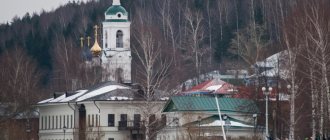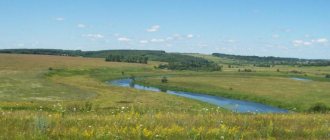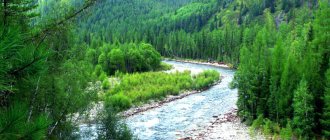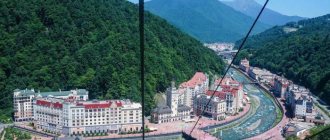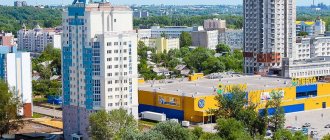The Amur Region is part of the Far Eastern Federal District. Using a map of the Amur region from a satellite, you can see that the administrative city of the region is Blagoveshchensk.
The region covers an area of more than 350 thousand square kilometers. The region borders both the Khabarovsk Territory, the Trans-Baikal Territory, and the Republic of Sokha. Also, part of the territory is in contact with the Chinese border. The region has no access to the sea. This is clearly displayed by the map of the Amur region.
Using the map, you can easily find any object in the region and create wonderful routes around Russian cities. She is a faithful assistant during the trip and in planning excursion programs.
What holiday is it today?
December 17, 2021, Friday
Today are holidays, events: Day of Strategic Missile Forces Day of State Courier Service Employees Memorable date in the military history of Russia: Capture of the Ochakov fortress in 1788 Tomorrow: Day of the internal security units of the internal affairs bodies of the Russian Federation (FSB) Day of civil registry office workers International Immigrant Day
Today is an Orthodox holiday : Great Martyr Barbara and Martyr Juliania of Iliopolis. St. John of Damascus... Tomorrow: St. Sava the Sanctified. Saint Gury, Archbishop of Kazan...
Today is a national holiday: Varvarin Day... Tomorrow: Savvin Day...
Seasons
Seasons, four periods of the year (spring, summer, autumn and winter) characterized by certain average temperatures. The period during which the Sun passes through one of these sectors is called the season. Spring in the Northern Hemisphere and autumn in the Southern Hemisphere begin when the Sun passes through the initial circle of declination and its right ascension is 0° (vernal equinox). Summer in the Northern Hemisphere and winter in the Southern Hemisphere occur when the sun's right ascension is 90° (summer solstice). Autumn in the Northern Hemisphere and spring in the Southern Hemisphere begin when the sun's right ascension is 180° (autumnal equinox). The beginning of winter in the Northern Hemisphere and summer in the Southern Hemisphere is considered to be the winter solstice, when the direct ascension of the Sun is 270°... Next: Seasons. Russian folk calendar. Monthly words...
Geographical location of the Amur region on the map of the Russian Federation
The Amur region is located in the eastern part of Asia. Its southern part coincides with the border between Russia and China, which runs along the fairway of the river. Amur. Within Russia, the region borders on the following regions:
- in the north - with Yakutia;
- in the east - with the Jewish Autonomous Region and the Khabarovsk Territory;
- in the west - with the Trans-Baikal Territory.
If you look at an online map of the Amur Region with its borders, you can assess its position in relation to the Pacific Ocean. It affects the climate of the region. The eastern part of the region is subject to a monsoon climate, formed by the interaction of the largest ocean and the largest continent.
The northern and western parts of the region are subject to a sharply continental climate with severe frosts in winter, hot summers and little precipitation.
Folk calendar about every day
Every day one season always replaces another and this determines a person’s way of life. In connection with this, a folk calendar was formed in which there were practically no nameless, unmarked days. Every day was special, had its own purpose. All this was determined by climate conditions and astrological phenomena.
A calendar is a system for counting periods of time. The first calendars arose a long time ago, in ancient times, because there was a need to measure time. The word calendar comes from the Latin words caleo - to proclaim and calendarium - debt book. This is due to the fact that in Ancient Rome the beginning of each month was especially proclaimed, and because it was customary to pay debts on the first day of the month. Different peoples counted time differently. Some calendars are based on the changing phases of the moon - lunar calendars; in others - the change of seasons - sunny; in others, the length of the year was coordinated with the change of seasons, and the counting of months was associated with the phases of the Moon. Such calendars are called lunisolar.
In Rus', the calendar was called a monthly calendar. Every day, the month book covered the entire year of peasant life, “describing” day by day, month after month, where each day had its own holidays or weekdays, customs and superstitions, traditions and rituals, natural signs and phenomena. The cyclical nature of the calendar is reminiscent of human life, where spring is youth, summer is heyday, autumn is the time of harvesting fruits (it’s good if there are some, otherwise you can live your life without collecting fruits), winter is the time of wisdom and peace. This cyclicality and rhythm determined the way of life of the farmer. The folk calendar was an agricultural calendar, which was reflected in the names of the months, folk signs, rituals and customs. Even the determination of the timing and duration of the seasons is associated with real climatic conditions. Hence the discrepancy between the names of the months in different areas... Next: Folk calendar...
see also
- Amur region
- Symbols and landmarks of the Amur region
- Cities of Russia
| [ + ] Cities by regions of Russia | |
| Cities of the North-West (NWFD) | St. Petersburg (and its cities) • Leningrad region (historical Staraya Ladoga) • Arkhangelsk region • Vologda region • Kaliningrad region • Karelia • Komi • Murmansk region • Nenets Autonomous Okrug • Pskov region |
| Cities of the Volga region (Volga Federal District) | Bashkortostan • Volgograd region • Kalmykia • Kirov region • Mari El • Mordovia • Nizhny Novgorod region • Orenburg region • Penza region • Perm region • Samara region • Saratov region • Tatarstan • Udmurtia • Ulyanovsk region • Chuvashia |
| Cities of Southern Russia (SFD) | Sevastopol (including Inkerman) • Republic of Crimea • Adygea • Astrakhan region • Krasnodar region • Rostov region |
| Cities of the North Caucasus (NCFD) | Dagestan • Ingushetia • Kabardino-Balkaria • Karachay-Cherkessia • North Ossetia - Alania • Stavropol Territory • Chechen Republic |
| Cities of the Urals (Ural Federal District) | Kurgan region • Sverdlovsk region • Tyumen region • Khanty-Mansi Autonomous Okrug - Yugra • Chelyabinsk region • Yamalo-Nenets Autonomous Okrug |
| Cities of Siberia (Siberian Federal District) | Altai Republic • Altai Territory • Irkutsk Region • Kemerovo Region • Krasnoyarsk Region • Novgorod Region • Novosibirsk Region • Omsk Region • Tomsk Region • Tyva • Khakassia |
| Cities of the Far East (FEFD) | Amur Region • Buryatia • Jewish Autonomous Region • Trans-Baikal Territory • Kamchatka Territory • Magadan Region • Primorsky Territory • Sakha (Yakutia) • Sakhalin Region • Khabarovsk Territory • Chukotka Autonomous Region |
| see also | Cities of the DPR, LPR, Transnistria, South Ossetia • Regions of Russia • Cities of Russia |
Fishing calendar for every day
The fishing calendar should not be taken as an absolutely indisputable truth. Fish biting is greatly influenced by a whole range of natural factors, as well as the influence on the nature of man himself. You must not forget that the fish’s bite depends and is determined not only by the calendar dates and biological cycles of their life, reflected in the calendar, but also, no less, by the state of their habitat; the bite also depends on weather conditions: air and water temperatures, cloudiness, wind direction and strength, etc... Next: Fishing calendar...
Urban settlements
- Magdagachi
Population 9,895 (2020).
- Progress
Population 9,517 (2020).
- Seryshevo
Population 9,438 (2020).
- Arhara
Population 8,508 (2020).
- Novobureysky
Population 6,688 (2020).
- Fevralsk
Population 4,560 people (2020).
- Erofey Pavlovich
Population 4,438 (2020).
- Talakan
Population 4,139 (2020).
- Bureya
Population 4,021 (2020).
- Urusha
Population 3,262 (2020).
- Ushumun
Population 1,899 (2020).
- Novoraichikhinsk
Population 1,842 people (2020).
- Sivaki
Population 1,568 people (2020).
- Ekimchan
Population 986 people (2020).
- Tokur
Population 816 people (2020).
Orthodox calendar about every day
Orthodox calendar: Orthodox, Church and Christian holidays.
The church year is an alternation of weekdays and holidays. On weekdays, a person is called to work “by the sweat of his brow to earn his bread.” Holidays are given in order to feel liberation, to rise above the bustle and routine of the world, to feel involved in the highest of worlds, “where there are no illnesses, sorrows and sighs, but endless life.” Since ancient times, holiday cycles have been associated with the seasons. The pagans associated them with the worship of the forces of nature, the cult of which in the Old Testament was replaced by gratitude to the Creator for the universe. And although the connection between holidays and the seasons has not completely lost its power, since God is present in everything, in the plant and animal world, in human works, it nevertheless faded into the background, giving way to a spiritual foundation built on the Sacred Scriptures. The history of Orthodox holidays dates back to the times of the Old Testament. Each of the Orthodox holidays is dedicated to the remembrance of the most important events in the life of Jesus Christ and the Mother of God, as well as the memory of saints... Next: Orthodox calendar...
Russian folk calendar for every day
The word “sign” comes from the word “notice”, i.e. observe. As a result of observing what happens around a person every day, he accumulates life experience. This knowledge was passed down from generation to generation, carefully preserved and people trusted it as a sacred book. Many signs have come to us from the depths of centuries without losing their knowledge. Each of us is free to choose: to dismiss all this as an absurd superstition or to take a closer look at the signs and take the centuries-old experience of generations more seriously. Most of us, when taking exams, ask them to scold them, boasting about some kind of good fortune or luck, spit so as not to jinx them or knock on wood, take a detour if a black cat crossed the road, are afraid of the number 13 and much more. And who among us does not have lucky things, numbers? Who has never resorted to the help of fate at least once in their life, who has not believed in secrets? It’s as if everything connected with signs is hidden somewhere deep in our subconscious. Often we remember them mechanically, unconsciously, or just as a joke. But, undoubtedly, the signs contain a lot of accurate knowledge and practical wisdom of our ancestors. They cover all the characteristic, often difficult to perceive, natural phenomena. Signs have preserved a lot of what was in old folk holidays and customs; they help predict the weather, grow crops... Next: Folk signs...
Road connections
The main transport system of the region is the Trans-Siberian Railway, which runs throughout the southern part. In addition, the Baikal-Amur Mainline, which extends north from the Trans-Siberian Railway, is of great importance.
In addition, branches depart from the Trans-Siberian Railway to the south in the area of Skovorodino, Blagoveshchensk and Raichikhinsk.
There are two federal highways located on the territory of the region - Amur (R-297) and Lena (A-360).
Part of the Amur from Blagoveshchensk and downstream is navigable, which allows small ships from the Pacific Ocean to reach the regional capital. Part of the Zeya River located below the Zeya hydroelectric station is also navigable for small vessels.
Holiday calendar, dates and events of the year
All state and professional holidays in Russia, including significant World and International holidays, and other equally interesting holidays and events about every day.
The holiday has always kept pace with the history of mankind. Social time can be divided into three types: everyday life (weekdays), weekends and holidays. Everyday life is a series of practices repeated day after day and every day (work). Weekends are regular breaks from the rush of everyday life. It is believed that on weekends a person should restore his strength after working days. Day off, non-working day. A holiday is a day of celebration established in honor or in memory of someone or something. A day or series of days celebrated by the church in memory of a religious event or saint... Next: Calendar...
Prayer book, Orthodox prayers for every day
Prayer is the most powerful means for healing all illnesses - both physical and mental. Prayers can be laudatory or grateful, petitionary and repentant. If we have offended God, sinned, we must ask Him for forgiveness, that is, repent. Such prayers are called repentant prayers. If everything is fine with us, if we and our loved ones are healthy and prosperous, if we have a place to live, something to wear, something to eat, we must glorify and thank God for this. Such prayers are called praise or thanksgiving. If some misfortune, illness, trouble or need happens, you need to ask God for help. Such prayers are called petitionary... Next: Orthodox prayers...
Zodiac, astrological, eastern calendar. Zodiac signs
In ancient times, to establish the calendar, priests used knowledge of the positions of all the planets. Before the reform of Peter 1, the New Year was celebrated on the Day of the Autumn Equinox. On this day, according to ancient legend, the most peaceful treaty was concluded between the Great Race (ancient Slavs) and the Great Dragon (ancient Chinese) and it was approximately 7518 years ago... For the ancient Slavs, the calendar month corresponded to the lunar cycle from new moon to new moon, taking into account such Thus, the relationship of the entire annual cycle with astronomical and natural phenomena. There was no coherent calendar system. The main natural phenomena are still considered to this day to be the days of the solar equinox and solstice - the Slavic holidays Maslenitsa, Kupala, Ovsen and Kolyada. But during the time of Peter 1, all ancient Slavic calendars were abolished and a new Western European calendar from the Nativity of Christ (Julian calendar) was introduced, while the beginning of the calendar was moved to January 1. The Julian calendar (old style) did not take leap days into account and accumulated one extra day every 128 years. After the October Revolution in 1918, the Gregorian calendar (new style) was introduced in Russia, according to which an amendment of 13 days was introduced. The calendar of the ancient Slavs was based on two planets: the Sun and the Moon. And now they don’t use anything at all. The calendar has become static. There is no such thing as the calendar, it turns out, resting on some planet. Nobody even knows about it. There are just some standard numbers, there are months and holidays. The calendar is based on the Sun and Moon. Why is this so? Because these two luminaries influence the Earth. The Earth revolves around the Sun, and the Moon revolves around the Earth. And these two luminaries create the atmosphere on the planet. From here the calendar is built... Next: Astrological calendar...
Urban settlements[ | ]
Among the 15 urban-type settlements (working settlements) the following stand out[1][2][3]:
- 1 urban settlement corresponding to the category of regional subordination - highlighted in orange
- forms a city district within the framework of the organization of local self-government; - 1 urban-type settlement subordinate to an urban-type settlement of regional subordination,
- 13 urban settlements as part of districts (within the framework of the organization of local self-government they are included in the corresponding municipal districts or municipal districts).
| № | Name | district / town of regional subordination[5] | municipal district/mun./city district[6] | population (persons) |
| 1 | Arhara | Arkharinsky district | Arkharinsky municipal district | ↘8437[4] |
| 2 | Bureya | Bureya municipal district | Bureya municipal district | ↘3942[4] |
| 3 | Erofey Pavlovich | Skovorodinsky district | Skovorodino municipal district | ↘4368[4] |
| 4 | Magdagachi | Magdagachinsky district | Magdagachinsky municipal district | ↘9804[4] |
| 5 | Novobureysky | Bureya district | Bureya municipal district | ↘6572[4] |
| 6 | Novoraichikhinsk | Progress | r.p. Progress, GO | ↘1804[4] |
| 7 | Progress | Progress | r.p. Progress, GO | ↘9383[4] |
| 8 | Seryshevo | Seryshevsky district | Seryshevsky municipal district | ↗9575[4] |
| 9 | Sivaki | Magdagachinsky district | Magdagachinsky municipal district | ↘1523[4] |
| 10 | Talakan | Bureya municipal district | Bureya municipal district | ↘4046[4] |
| 11 | Tokur | Selemdzhinsky district | Selemdzhinsky municipal district | ↘796[4] |
| 12 | Urusha | Skovorodinsky district | Skovorodino municipal district | ↘3245[4] |
| 13 | Ushumun | Magdagachinsky district | Magdagachinsky municipal district | ↘1859[4] |
| 14 | Fevralsk | Selemdzhinsky district | Selemdzhinsky municipal district | ↘4500[4] |
| 15 | Ekimchan | Selemdzhinsky district | Selemdzhinsky municipal district | ↘965[4] |
Former town[ | ]
- Berezovka has been a town since 1981. Converted to a rural settlement in 1991.
- Varvarovka - transformed into a rural settlement in 1996.
- Vozzhaevka has been a town since 1980. Converted to a rural settlement in 1995.
- Gluboky - transformed into a rural settlement in 1968.
- Ekaterinoslavka has been a town since 1964. Converted to a rural settlement in 1991.
- Zavitaya is a town since 1936. Transformed into the city of Zavitinsk in 1954.
- Zlatoustovsk has been a town since 1942. Transformed into a rural settlement in 2010[7].
- Kivdinsky has been a town since 1929. Converted to a rural settlement in 1982.
- Kirovsky has been a town since 1940. Converted to a rural settlement in 1968.
- Koboldo has been a town since 1958. Converted to a rural settlement in 2012.
- Lukachek has been a town since 1942. Converted to a rural settlement in 1974.
- Maisky has been a town since 1939. Converted to a rural settlement in 1997.
- Nevers has been a town since 1934. Transformed into a rural settlement in 2001[8].
- Ogodzha has been a town since 1958. Converted to a rural settlement in 2012.
- Oktyabrsky has been a town since 1939. Converted to a rural settlement in 1995.
- Poyarkovo has been a town since 1963. Converted to a rural settlement in 1992.
- Raichikhinsk has been a town since 1934. Incorporated into a city in 1944.
- Solovyovsk has been a town since 1934. Converted to a rural settlement in 1996.
- Srednebelaya - town since 1981. Converted to a rural settlement in 1991.
- Srednyaya Nyukzha has been a town since 1933. Until 1938 it was called Blyukherovsk. Converted to a rural settlement in the 1950s.
- Stoiba has been a town since 1942. Transformed into a rural settlement in 2008[9].
- Taldan has been a town since 1950. Transformed into a rural settlement in 2001[8].
- Takhtamygda has been a town since 1957. Transformed into a rural settlement in 2001[8].
- Tygda has been a town since 1958. Converted to a rural settlement in 1993.
- Tyndinsky has been a town since 1941. Transformed into the city of Tynda in 1975.
- Shimanovsky has been a town since 1929. Transformed into the city of Shimanovsk in 1950.
- Shiroky - converted into a rural settlement in 2009.
- Uglegorsk - transformed into the city of Tsiolkovsky in 2015[10][11].
- Yasny - transformed into a rural settlement in 1979.
Dream books online, interpretation of dreams
A dream book is nothing more than an interpreter of dreams and dreams, a translator of dreams. Since ancient times, people have been using dream books; dreams have always been given great importance, and people have often noticed the prophetic properties of some dreams. The dream book can become your faithful assistant every day and throughout your life, thanks to the dream interpreter you can always make the right decisions, the dream book will help you resist temptations in time, and will warn you against wrong steps and frivolous actions. Further…

